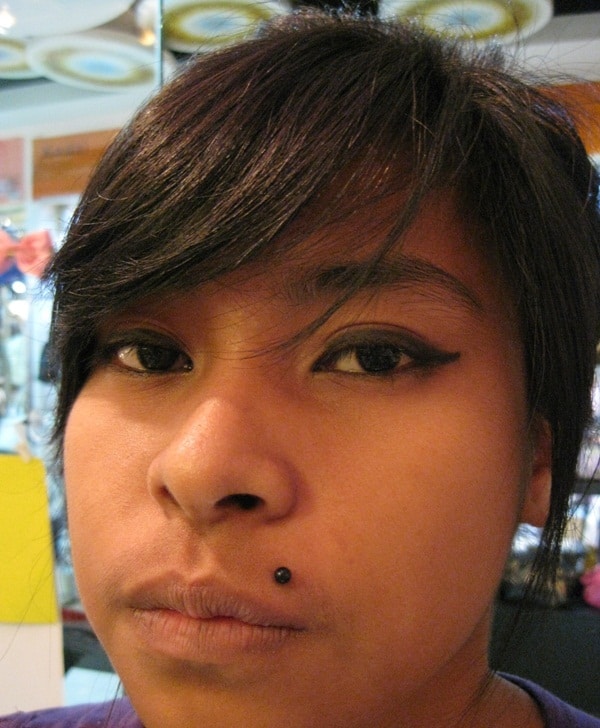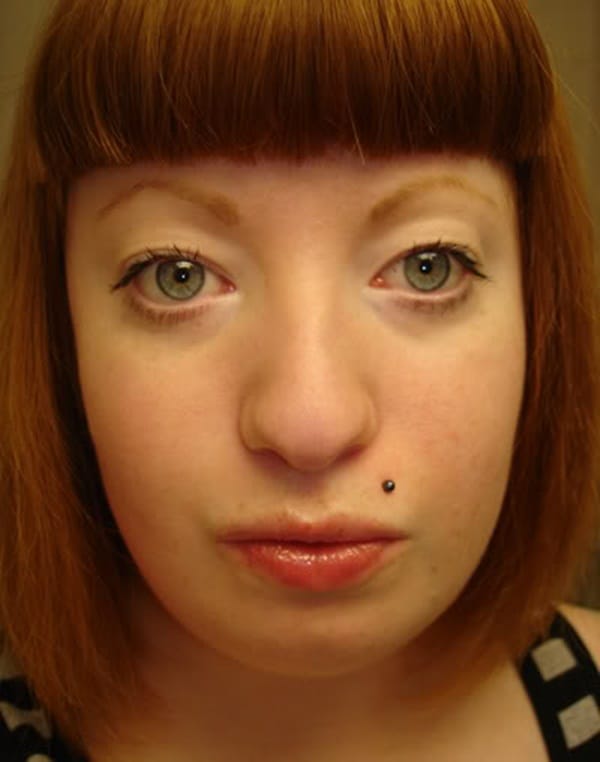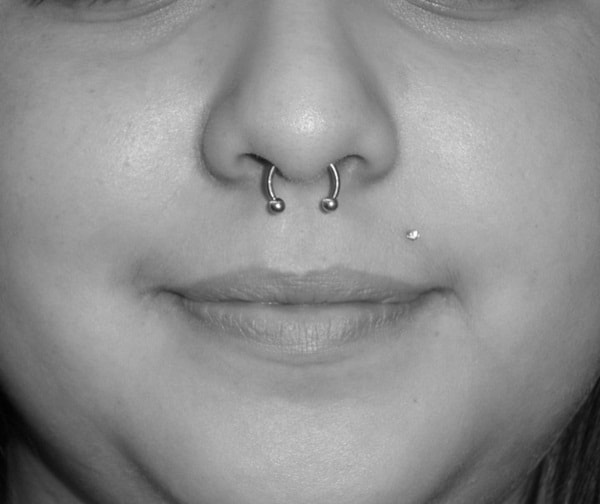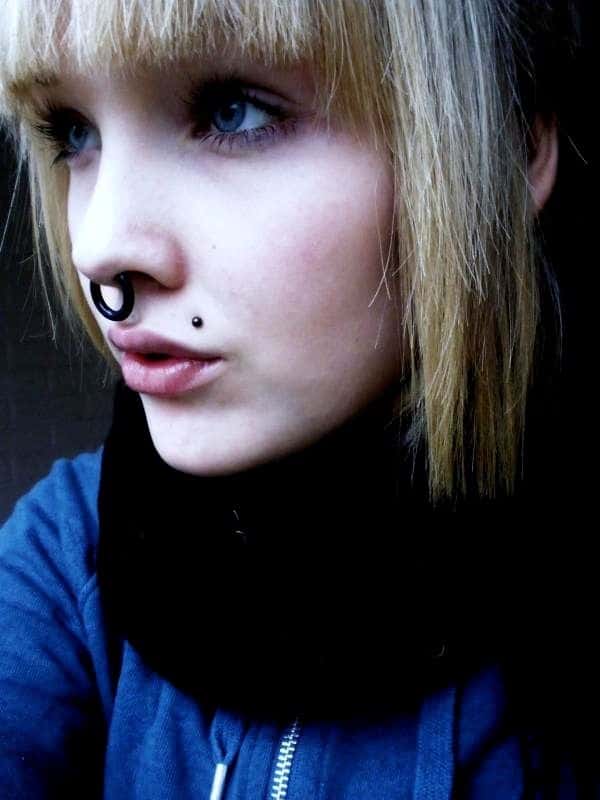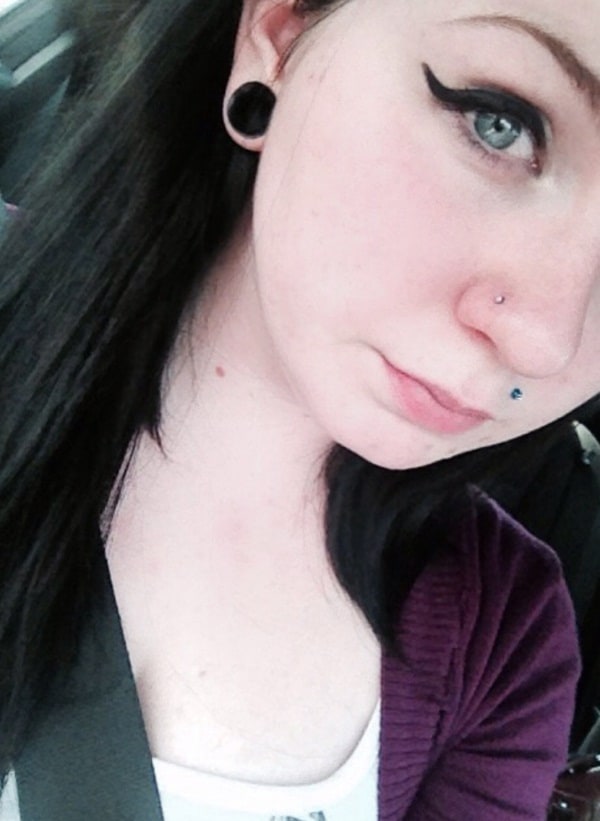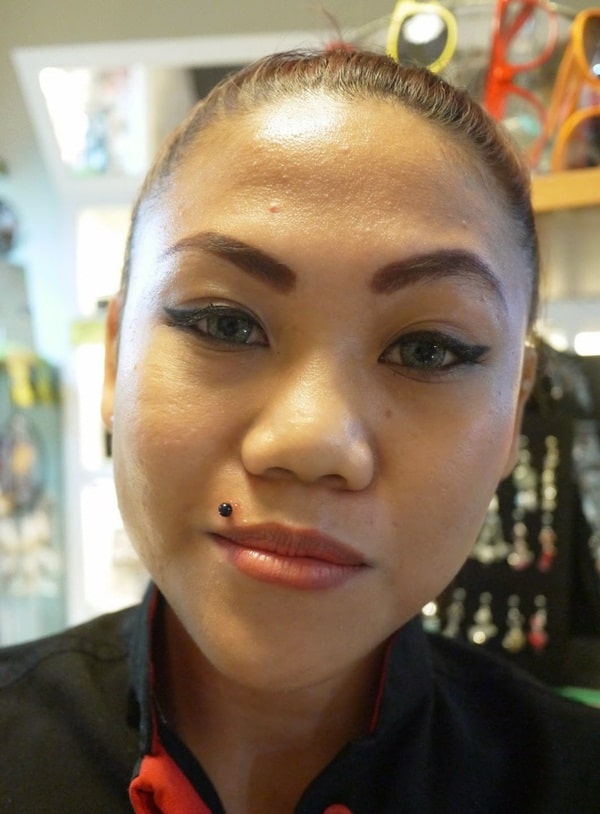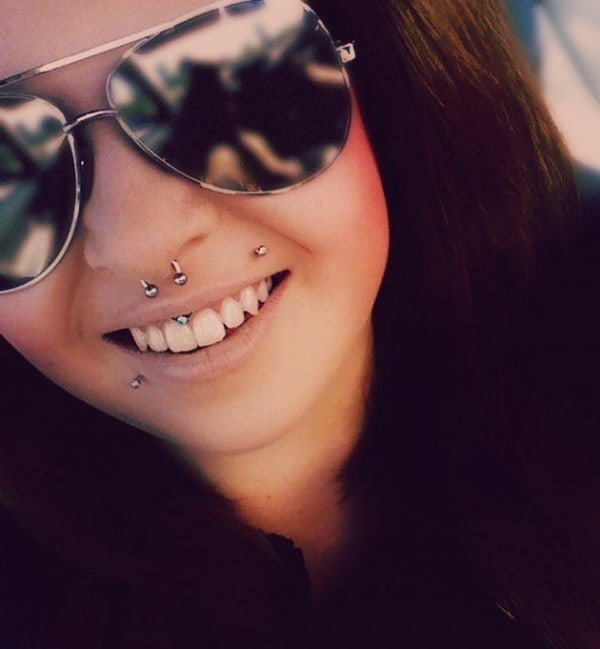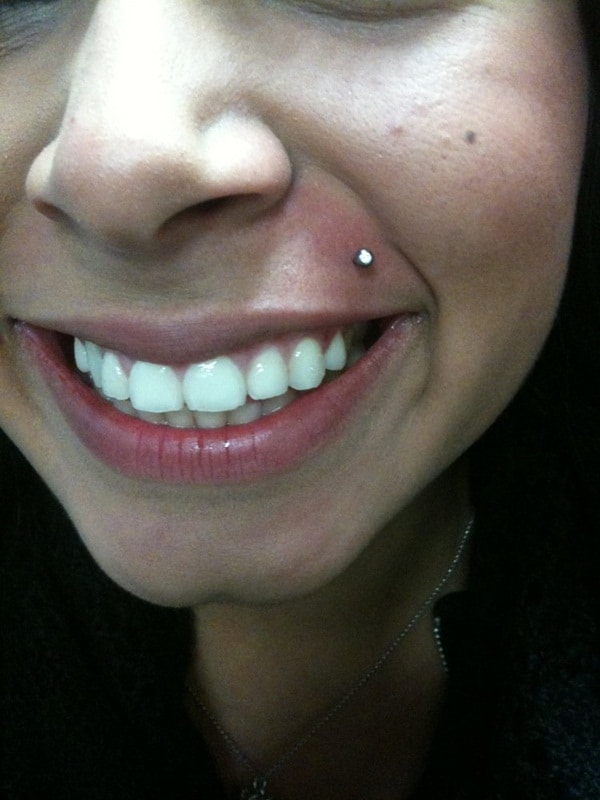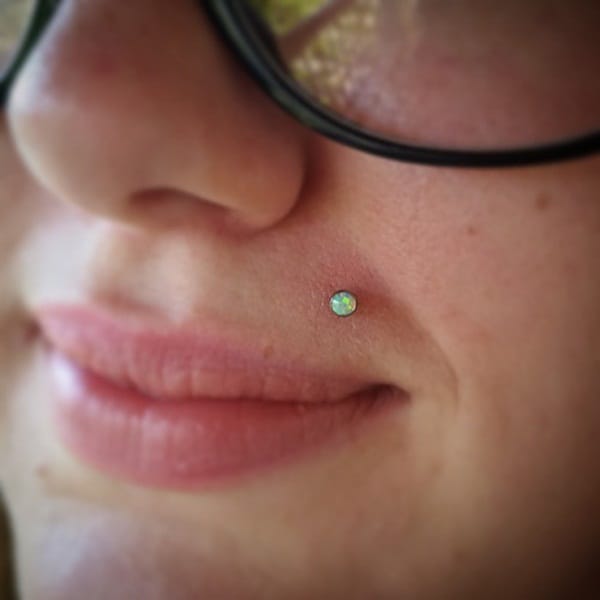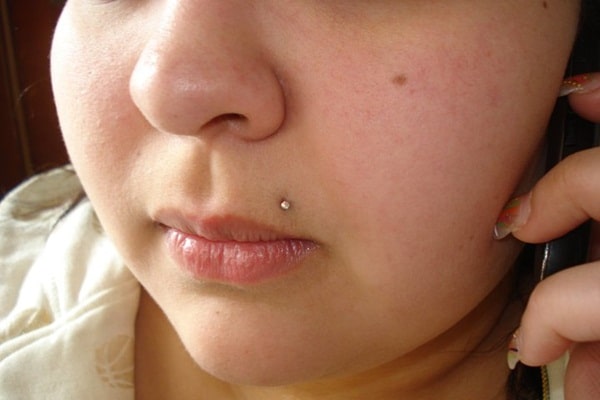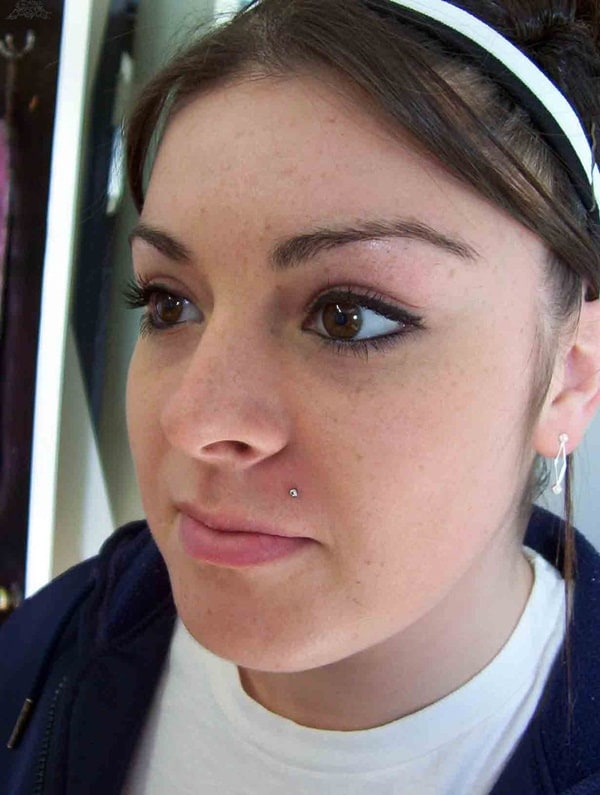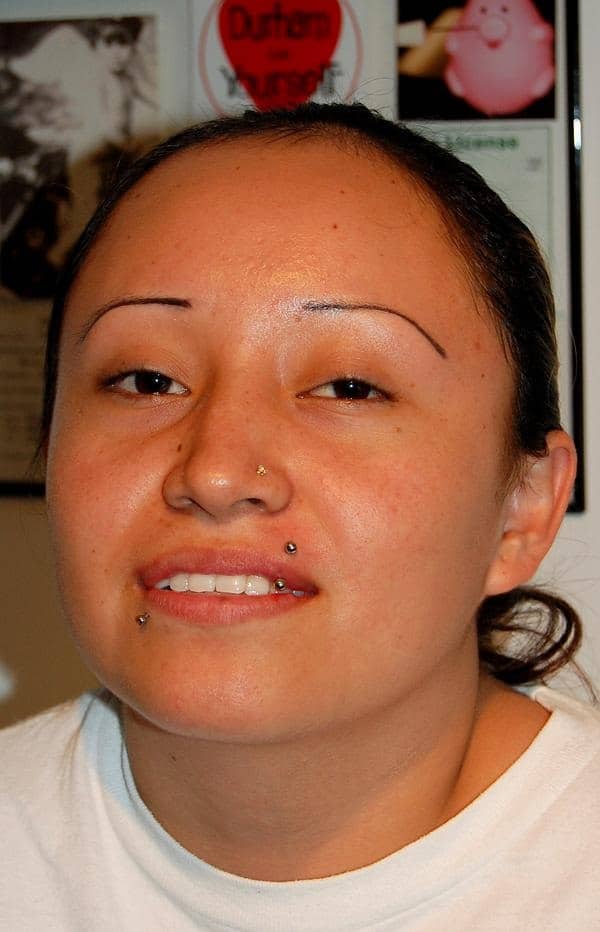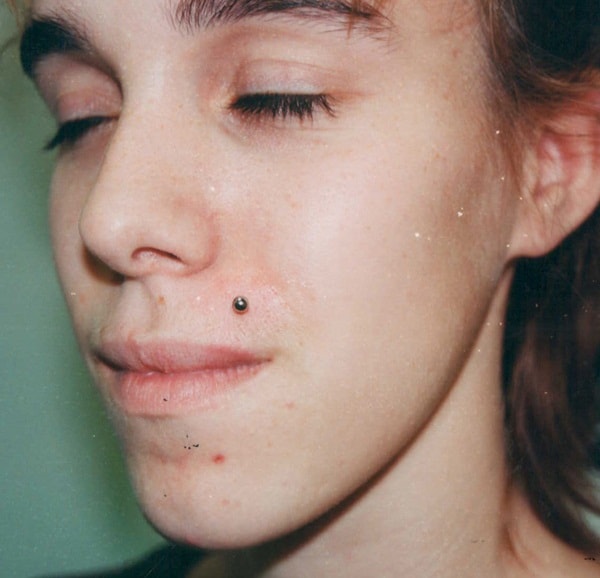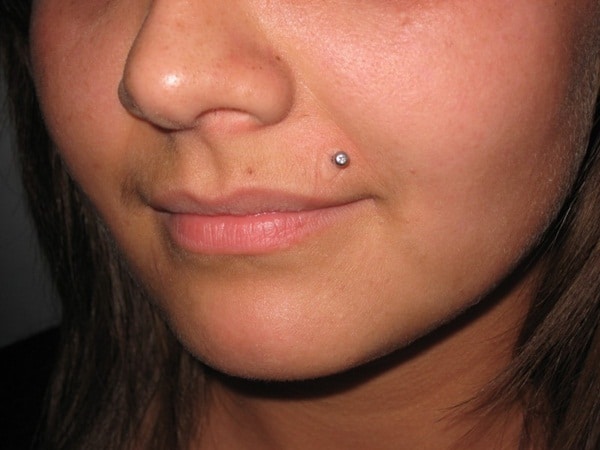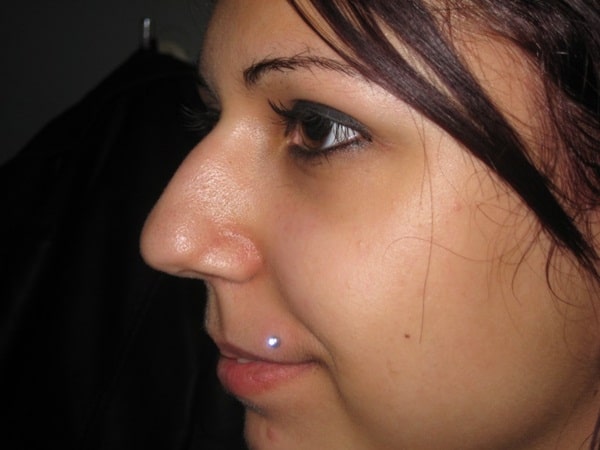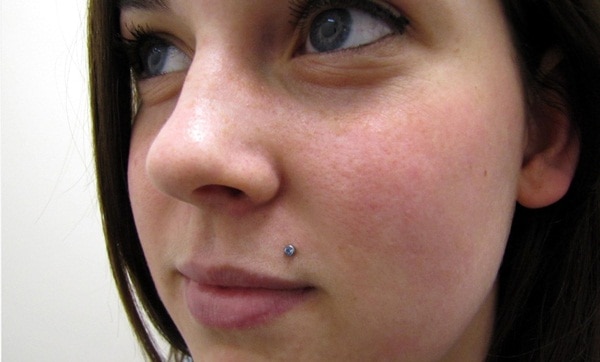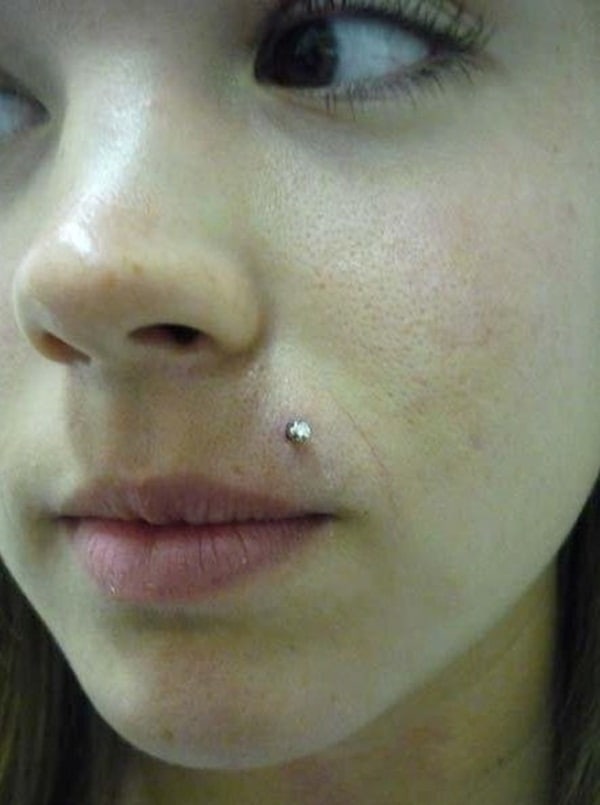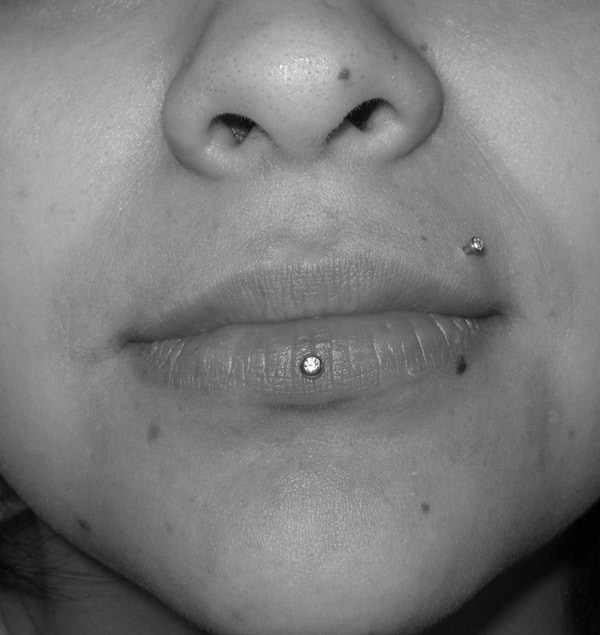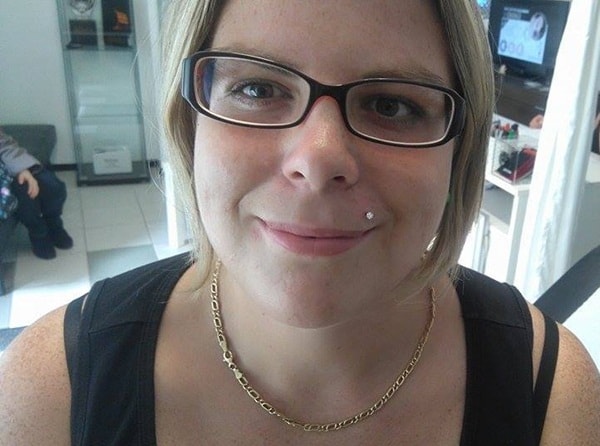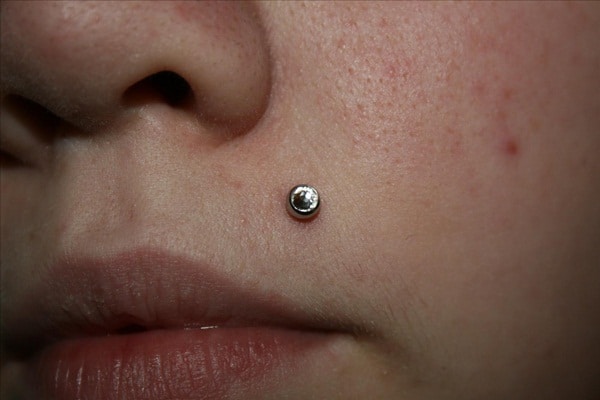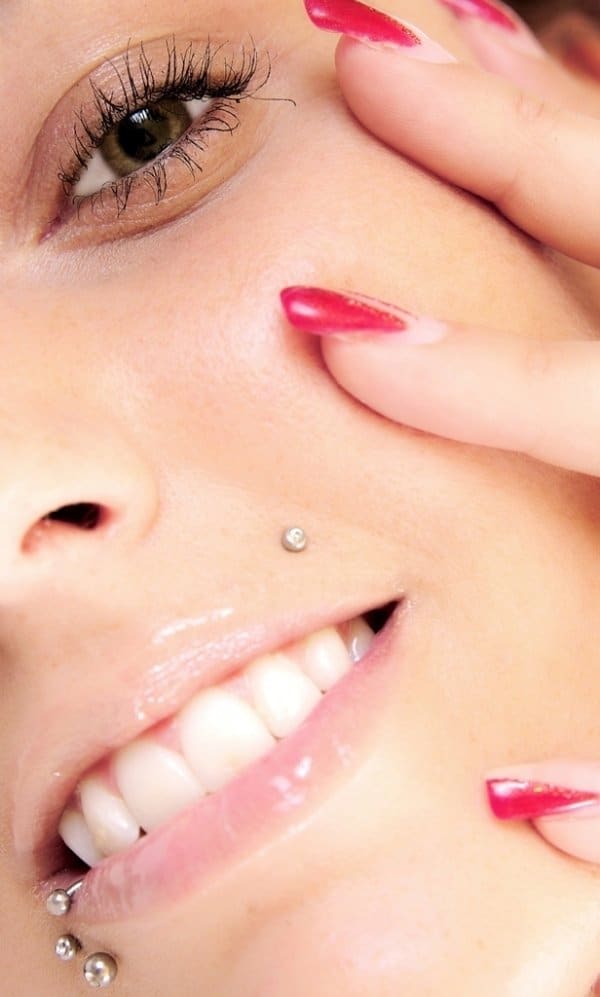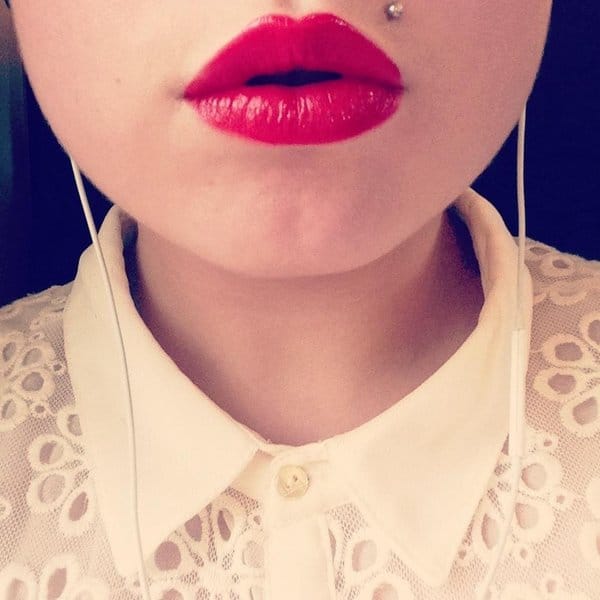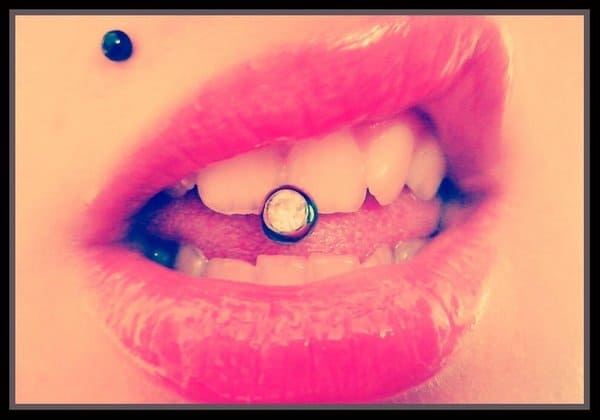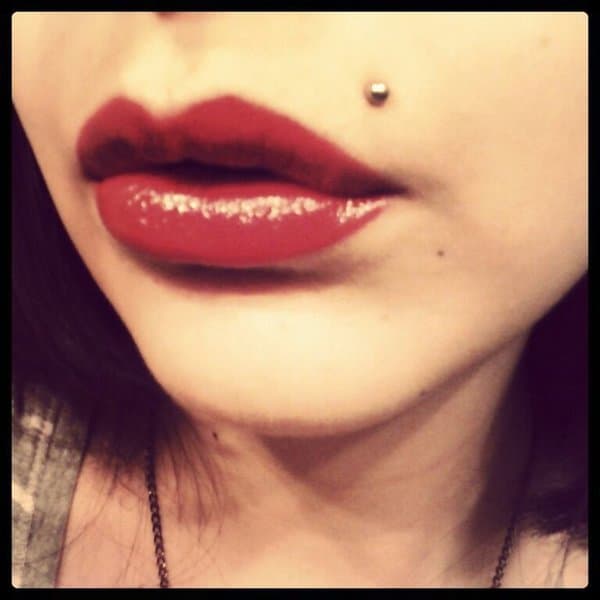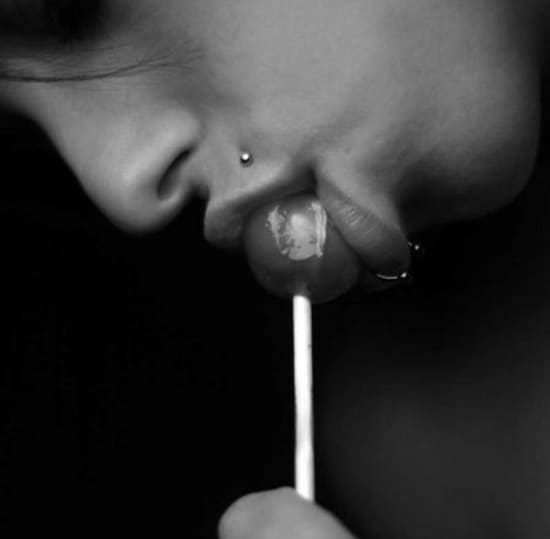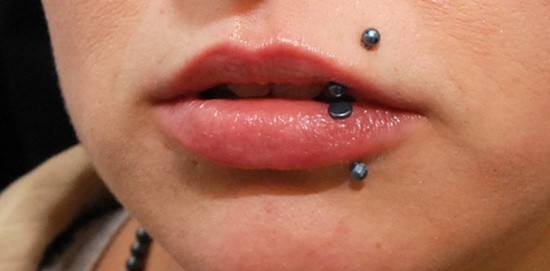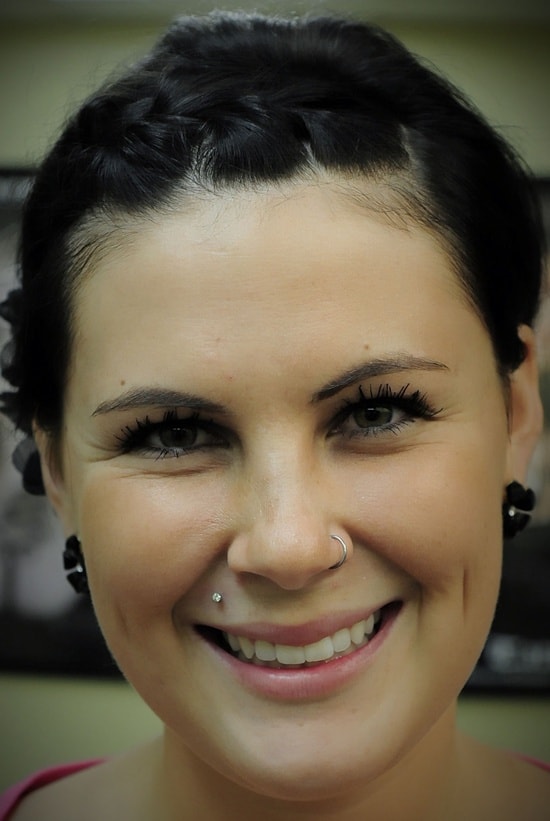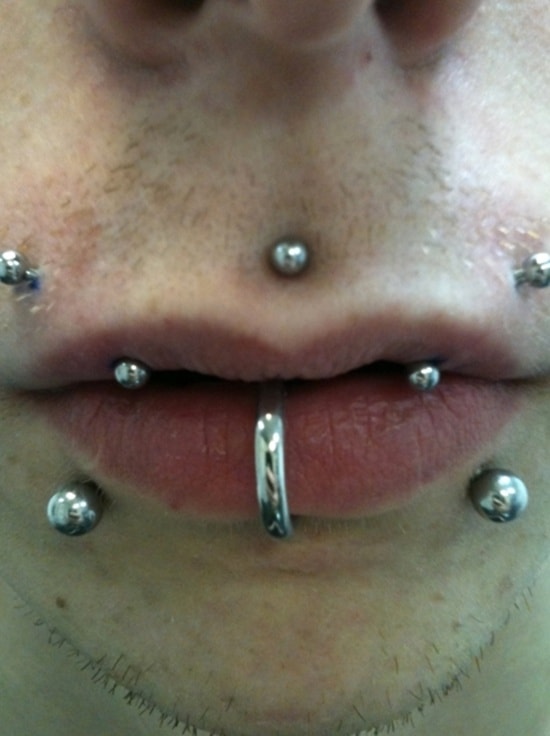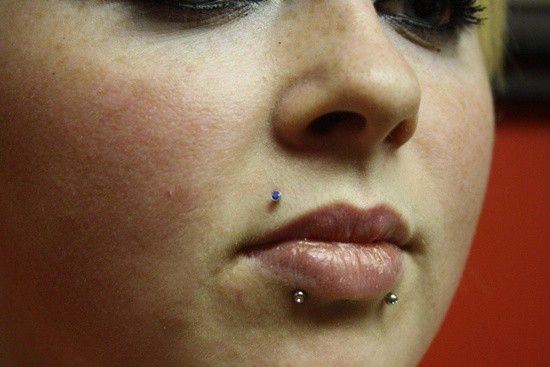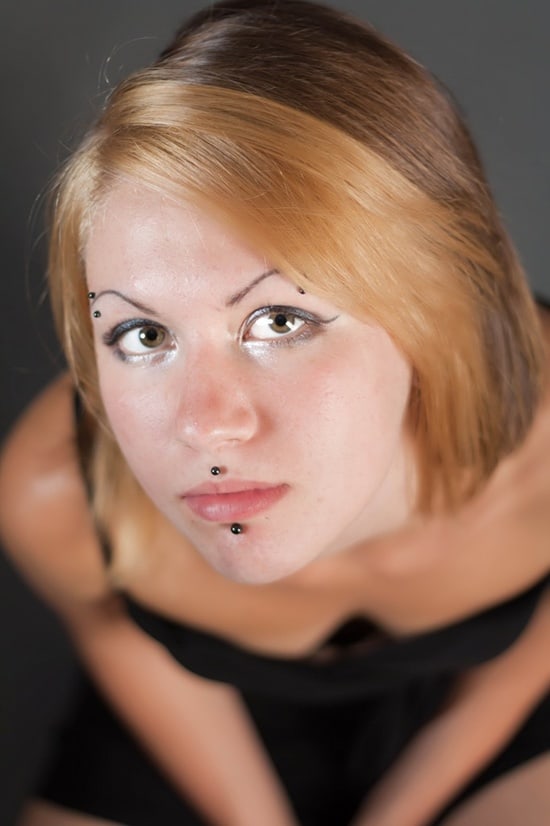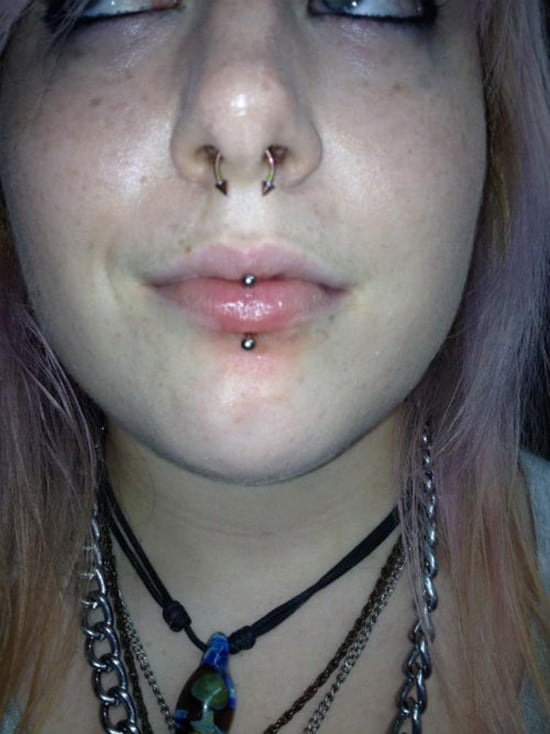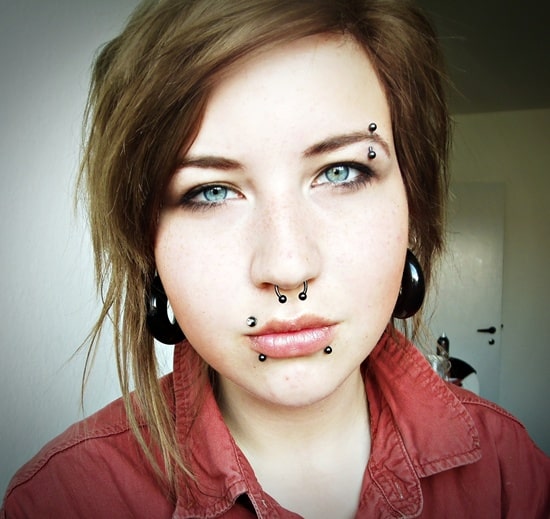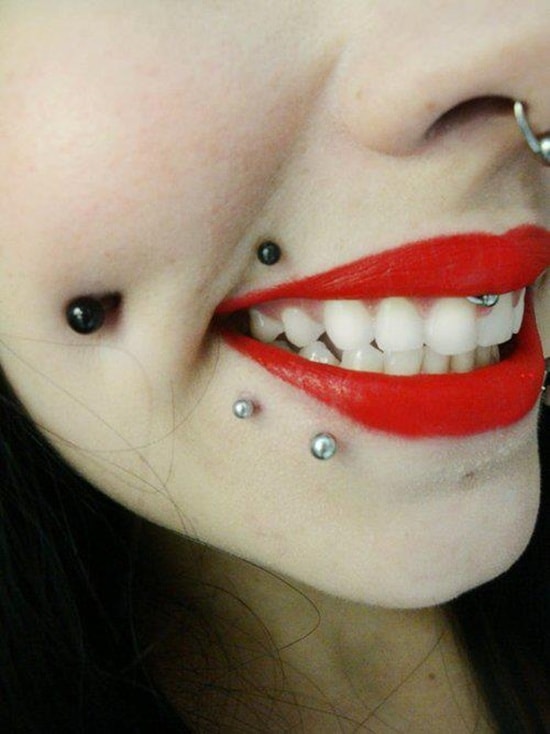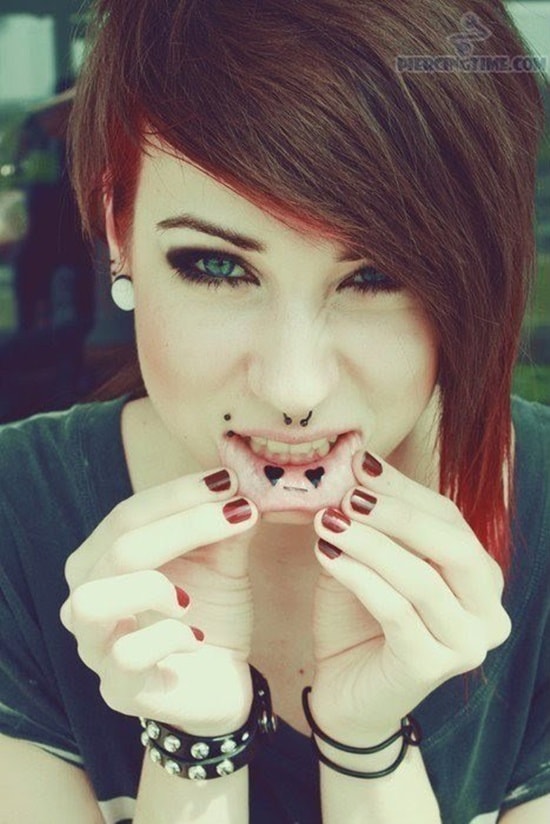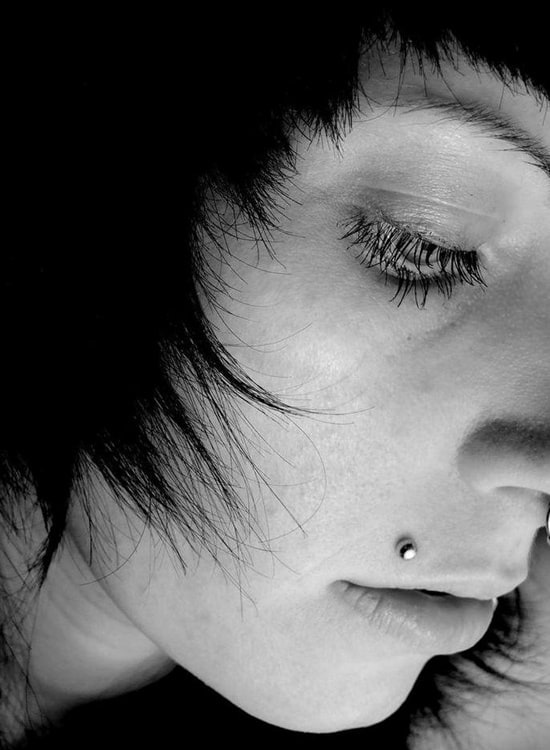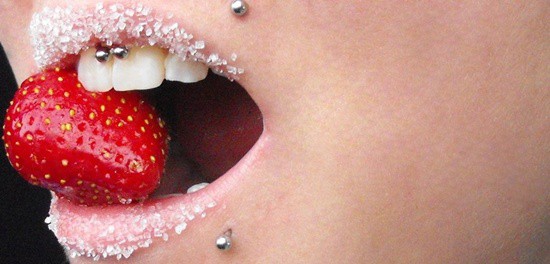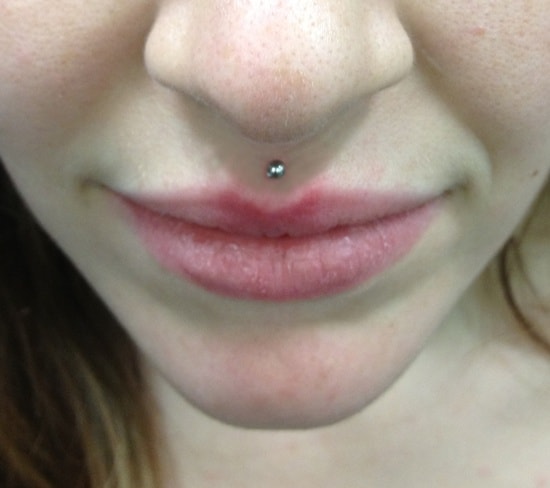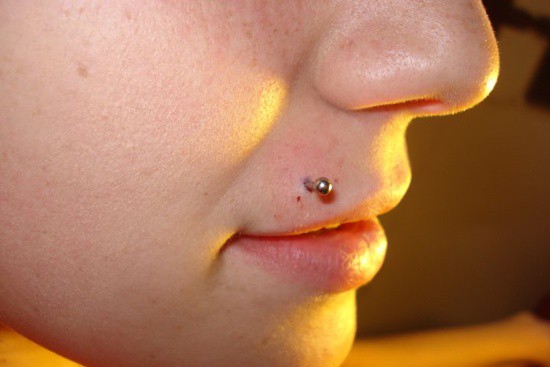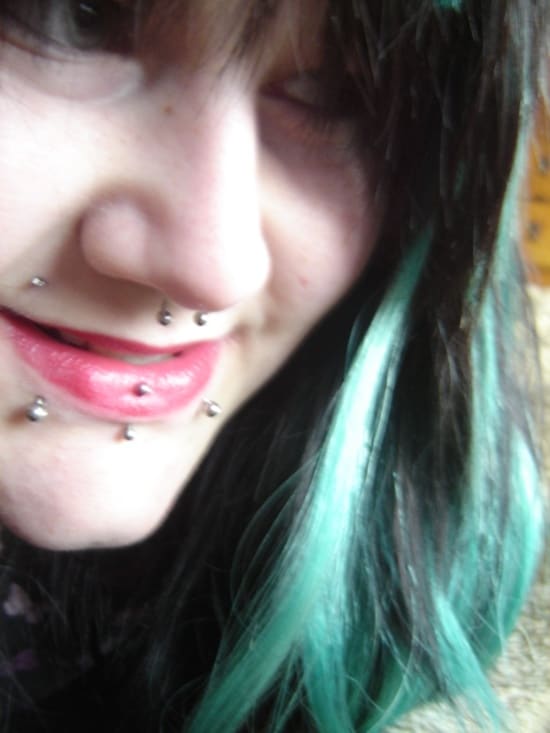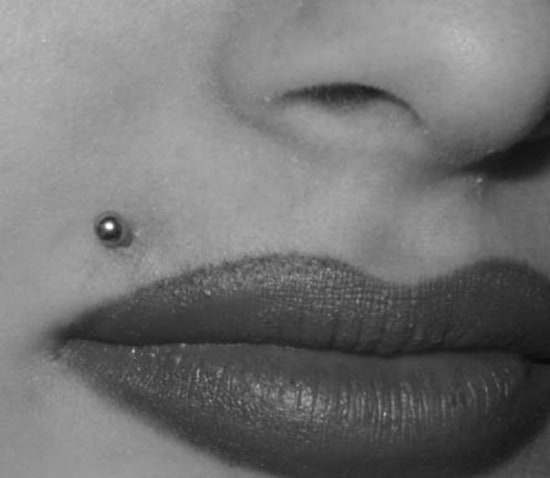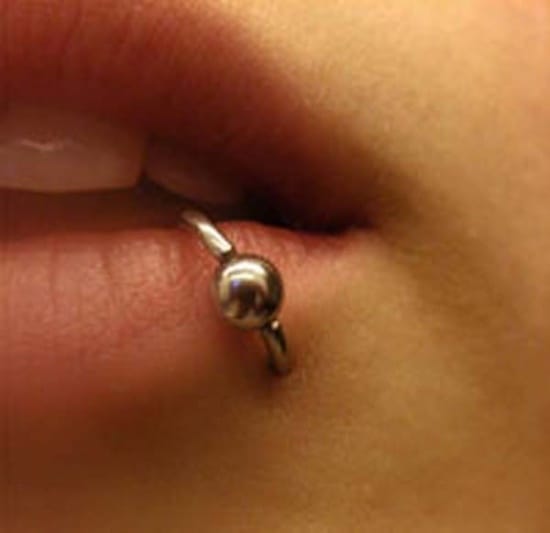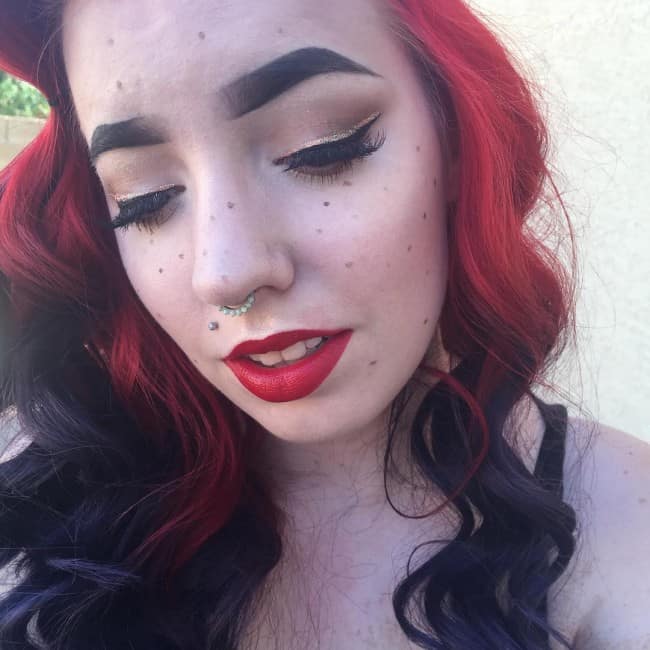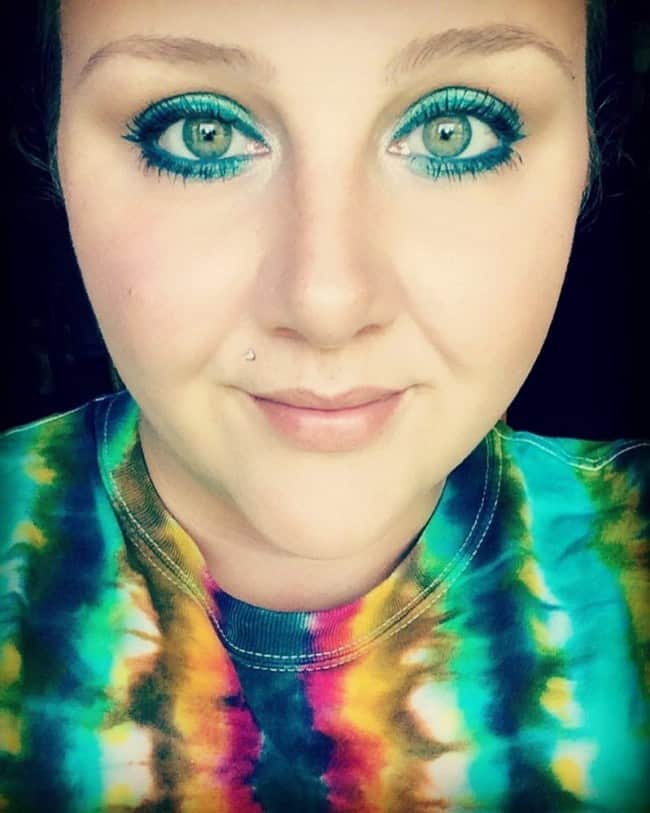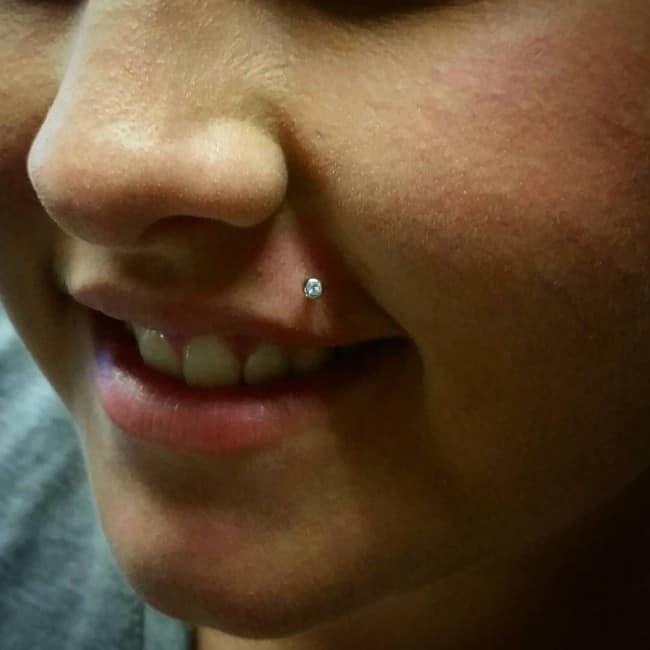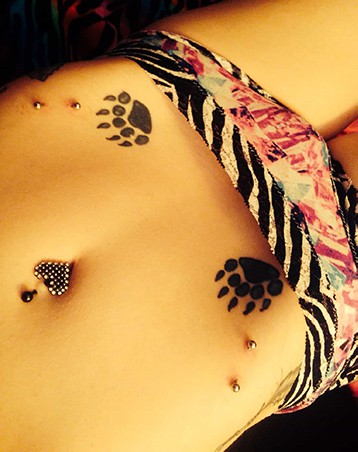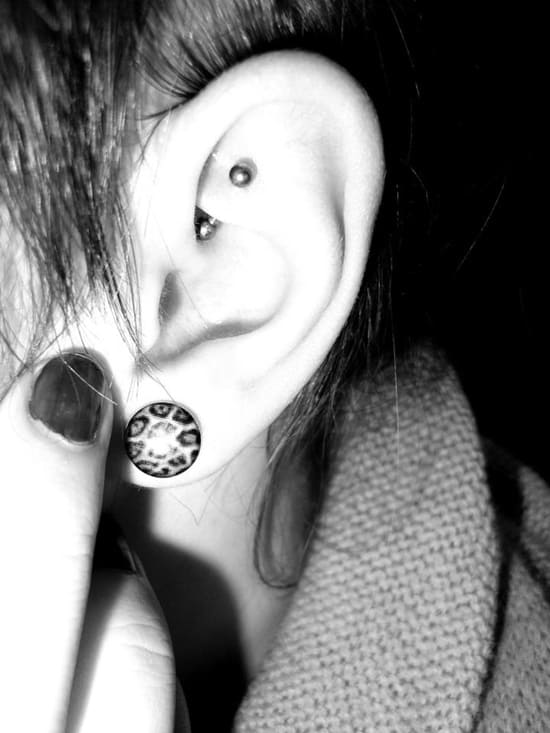A highly distinctive kind of upper lip piercing, the Monroe piercing has remained consistently popular over the last few years.
In this article, you’ll find out everything you need to know about this type of piercing, including a guide to the procedure, cost, aftercare tips, and much more!

What is a Monroe piercing?
A Monroe piercing is located above the upper lip, on the left side. It takes its name from Marilyn Monroe – in reference to the characteristic beauty mark on the legendary actress’ left cheek.
The same kind of piercing on the right side is known as a Madonna, again because the singer has a beauty spot on her right cheek/upper lip.
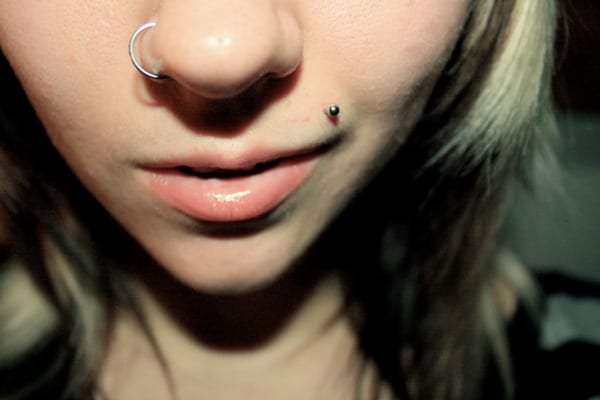
Double Monroe piercing
A ‘double Monroe’ is not an official technical term, but it’s sometimes used to refer to one of two things.
It can either mean having both a Monroe and a Madonna piercing, or it can refer to two piercings very close together in the Monroe piercing area.
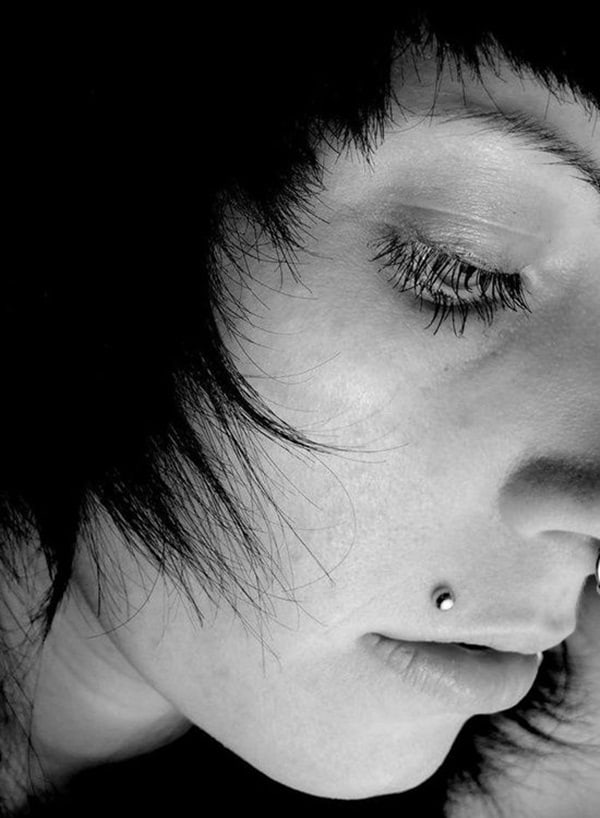
A Monroe and Madonna combination is also known as ‘angel bites’.
Reverse Monroe piercing
A reverse Monroe is located below the lower lip, just between the chin and the left cheek. The horizontal position stays the same as with the standard Monroe piercing, it’s just placed much lower, on the other side of the lips.
Monroe piercing jewelry
Because this piercing is, to some extent, supposed to resemble Marilyn Monroe’s beauty spot, the standard type of jewelry used is the labret stud.

A labret stud is composed of two parts – a disc with a post and a screw-on bead. The disc goes on the inside of the lip to hold the post in place – the post is the part that passes through your lip.
The tip of the post is threaded (has grooves in it, like a screw) to allow the bead to be screwed onto it on the outside.
Recommended Reading: Don’t miss our guide to daith piercings next!
The bead is the only visible part of the piercing, and there are a number of aesthetic options to choose from.
In addition to plain metal beads, there are colored metal ones, beads with gemstones set into them, and other decorative alternatives.
The size of labret studs used for Monroe piercings is usually 14, 16, or 18 gauge.

Monroe piercing procedure
The piercing procedure for a Monroe is fairly standard – the same as all other lip piercings (although there’s some debate out there as to whether the Monroe is, in fact, a lip piercing, since it’s not placed on the lip itself).
Getting a Monroe piercing usually doesn’t take long and involves the following process:
- The piercer disinfects the upper lip area. As you can imagine, this point is absolutely crucial – omitting it could lead to infection, and none of us want that to happen. You may also be asked to wash out your mouth with an antibacterial mouthwash so that the inside of the lip is also disinfected.
It’s normal to be a little bit stressed or anxious just before getting a piercing, but if your piercer attempts to proceed with the piercing without disinfecting your skin, you should absolutely speak up – or better yet, find another professional. - The entry point of the needle is marked. Using a marker pen, the piercing professional will draw a point on your skin to mark where the piercing is going to be. This is your chance to ask them to make any adjustments if you’re not completely happy with where the piercing is going.
- The piercing itself. The piercer will clamp the upper lip in the previously marked place, pulling it away from the teeth. They will then swiftly insert a sharp, hollow needle to make the hole for the piercing, and quickly fit the labret stud into place. Note that only the needle technique should be used for Monroe piercings – piercing guns are not suitable for the job and carry an increased risk of infection.
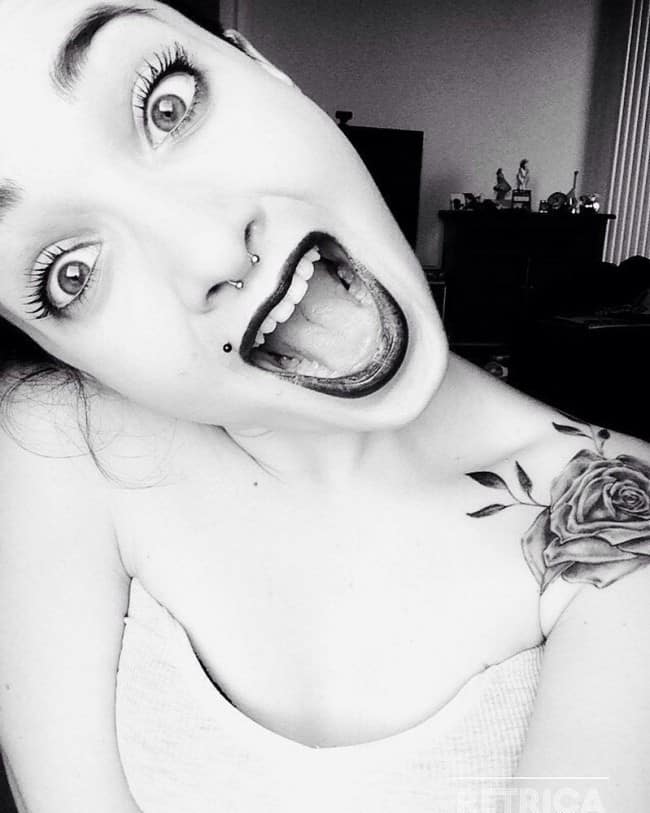
Monroe piercing preparation and aftercare guidelines
Your chosen piercing professional should provide you with some preparation tips at the point of making your appointment.
They will also likely give you a set of aftercare guidelines to follow once the Monroe piercing is in place.
Many piercers advise increased focus on oral hygiene in the week or so leading up to the Monroe piercing appointment.
This involves brushing your teeth and flossing at least twice daily, as well as rinsing your mouth with an antibacterial wash. This will help to bring down the number of bacteria in the mouth and minimize the risk of infection.
After getting the Monroe piercing, you’ll likely be advised to clean it with a saline solution once or twice a day.
Remember to wash your hands first before rinsing or soaking the piercing. Once you’re done, it’s important to use a clean towel to pat the area dry.

In addition to the standard hygienic procedures post-piercing, the following tips are also highly important during the healing process of a Monroe piercing:
- Avoid touching the piercing. Our hands are covered with bacteria the vast majority of the time, and you could end up transferring them into the still-healing wound. Also, moving the stud around could damage the skin and tissue further and prolong the healing process.
- Continue brushing your teeth and using mouthwash regularly. The risk of infection is higher on the outside, but it’s important to keep your mouth as bacteria-free as possible as the Monroe piercing heals.
- Avoid cigarettes and alcohol. Sure, we should be doing that anyway, but most of us don’t. For the duration of the healing process, it’s best not to drink too much as this can weaken the immune system and increase the risk of infection.
With proper aftercare, your Monroe piercing should be fully healed within 6 to 12 weeks.
It’s important not to take out the original stud during this process – wait until the piercing is completely healed and if in doubt, get a green light from your piercing professional first.

Possible risks and complications
As with just about any piercing, the primary risk involved is that of infection.
It’s normal for the piercing site to be red, swollen, and painful for the first couple of days, but if these symptoms persist for longer, you should seek medical advice – or at the very least consult your piercing professional.
As well as the possibility of the wound becoming infected, you should be aware of the risk of infection to your gums and teeth.
A badly placed or overlarge stud can rub against the teeth and gums, damaging enamel and tissue.
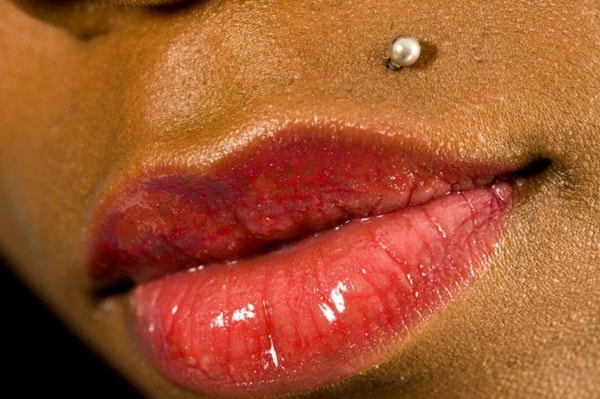
If this becomes a problem, there are plastic studs available to minimize it. If you notice anything wrong, whether you suspect enamel damage or infection, seek medical advice immediately – it’s not worth waiting, these things don’t get better on their own.
One last risk factor to mention takes place during the piercing procedure itself and is to do with the placement of a Monroe piercing.
Just above the upper lip, there is the superior labial artery – and there is a very small danger this might become ruptured if the piercer gets the placement wrong.
This is why it’s so very crucial to choose an experienced, professional piercer who knows exactly what they’re doing.

How much is a Monroe piercing?
You should expect the Monroe piercing price to fall somewhere between $50 and $80.
As with any body art and modification, the specific price will depend on two key factors – your geographical area and the specific studio you choose.
Some towns’ and areas’ prices are higher than others, and large cities usually boast the most expensive studios – but also have correspondingly more experienced piercers.
It’s important not to try to save money on any piercing or tattoo, and a Monroe is no exception.
Cheaper piercers will typically have less experience, and will, therefore, be more likely to make a mistake.
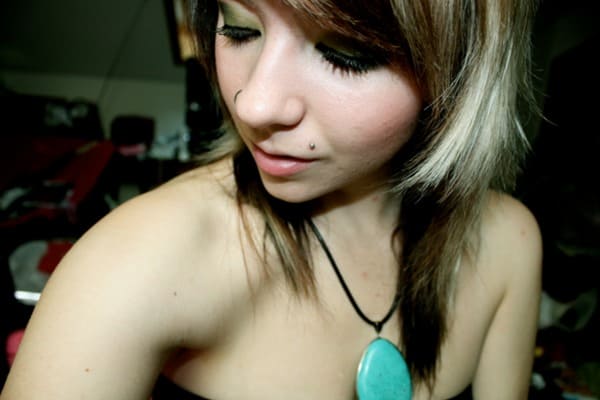
Monroe piercings are crucial to get right – there are so many nerve endings in the lips that even a slightly misplaced Monroe could lead to severe pain and other problems.
Similarly, a badly placed Monroe piercing will cause gum and tooth damage.
More expensive studios also tend to use better equipment and are more likely to follow strict hygiene procedures, meaning that the likelihood of infection and other complications should be lowered by paying a little extra money.
When you think about it, an extra $20 or $30 is not a huge financial investment, yet it does increase the chances of a successful and healthy piercing dramatically.
Also, choosing the cheapest option could result in complications that will be costly to put right, so you’ll end up spending more than you would have on an experienced piercer in the first place!
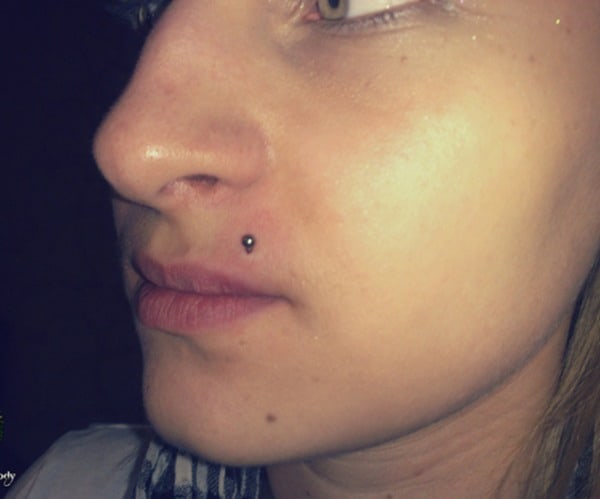
How much does it hurt?
A lot. There’s no way around that. The more nerve endings there are in an area, the more painful the piercing is going to be – and there are plenty of nerve endings above the upper lip.
That being said, everyone’s pain tolerance is different. You might find yourself among the lucky ones, who have no problem with getting piercings of any kind.
In any case, don’t let the pain of the piercing procedure change your mind about getting a Monroe piercing.
The procedure is very quick and a skilled piercer will have you sporting a stud in a matter of seconds.
The area will be sore for at least a few days afterwards, but the worst of it only lasts a moment.

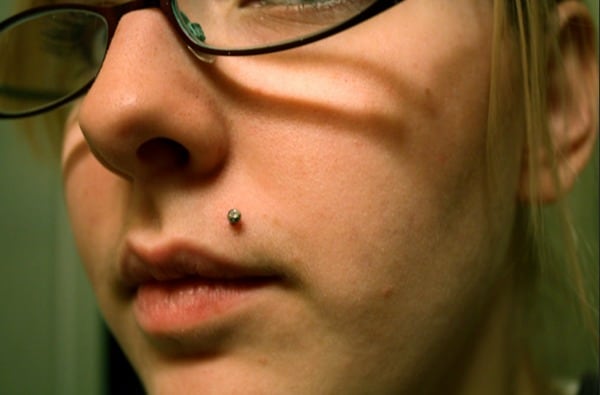


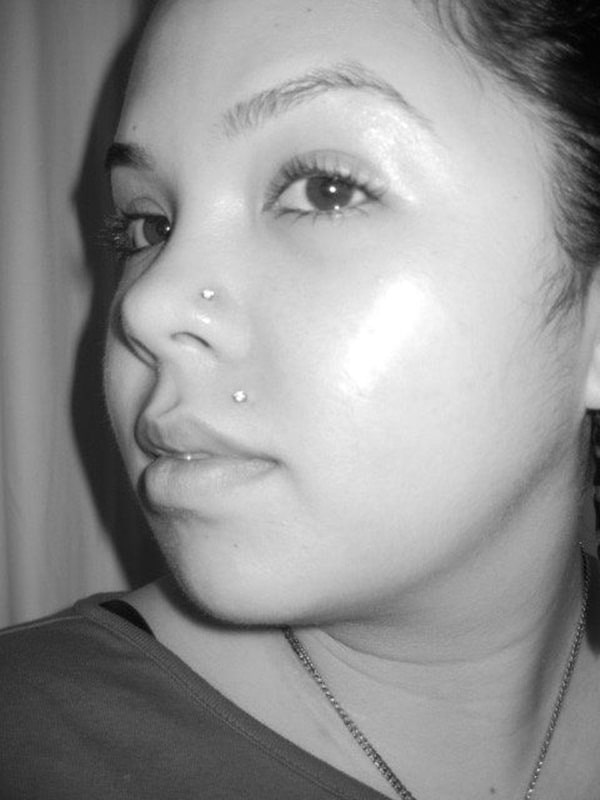
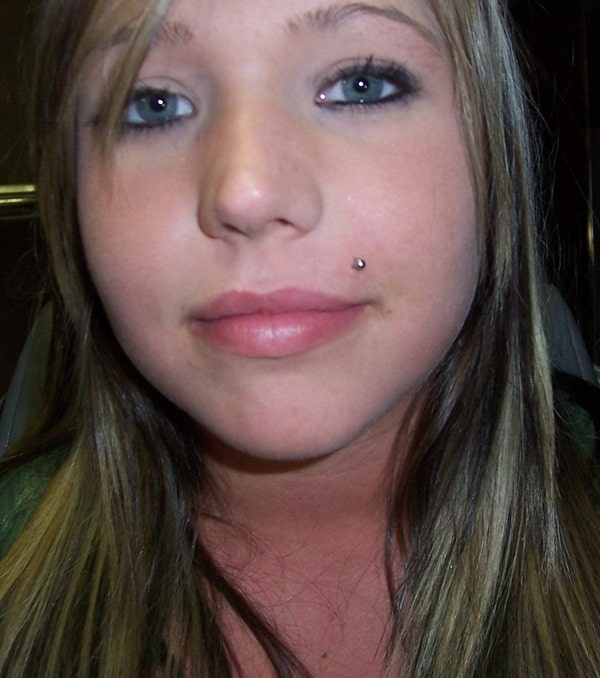

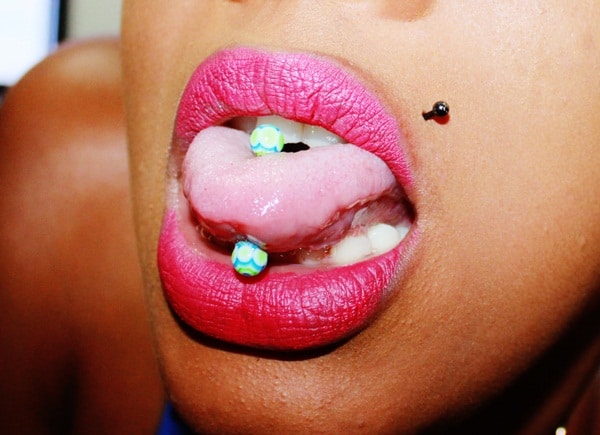
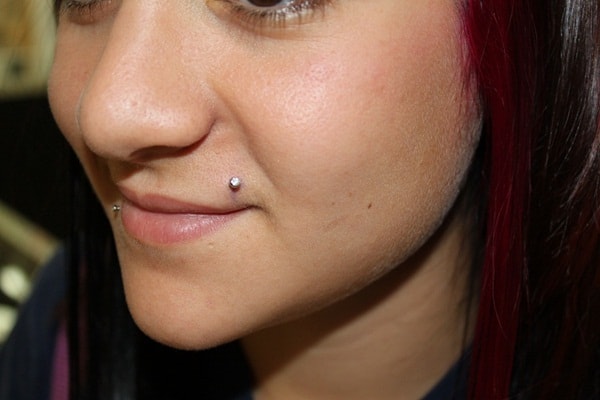
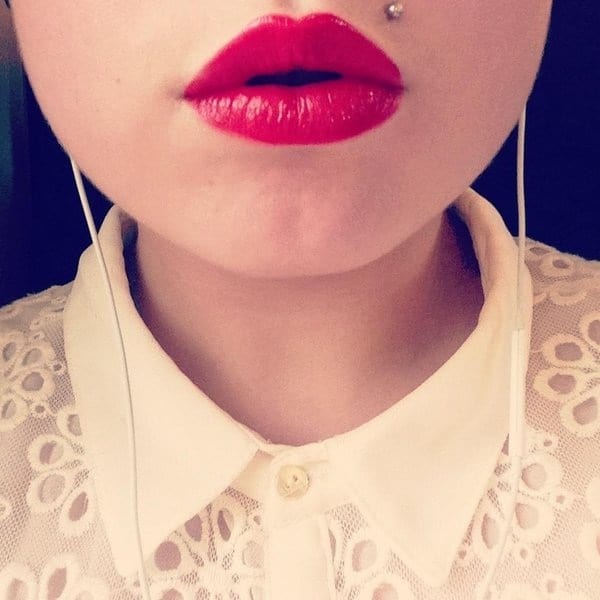
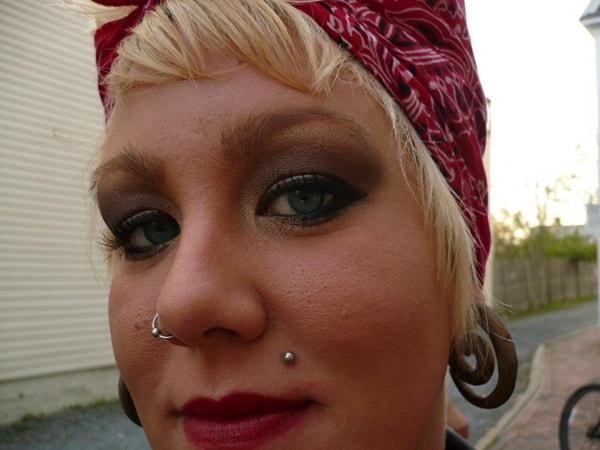
Scar Removal

